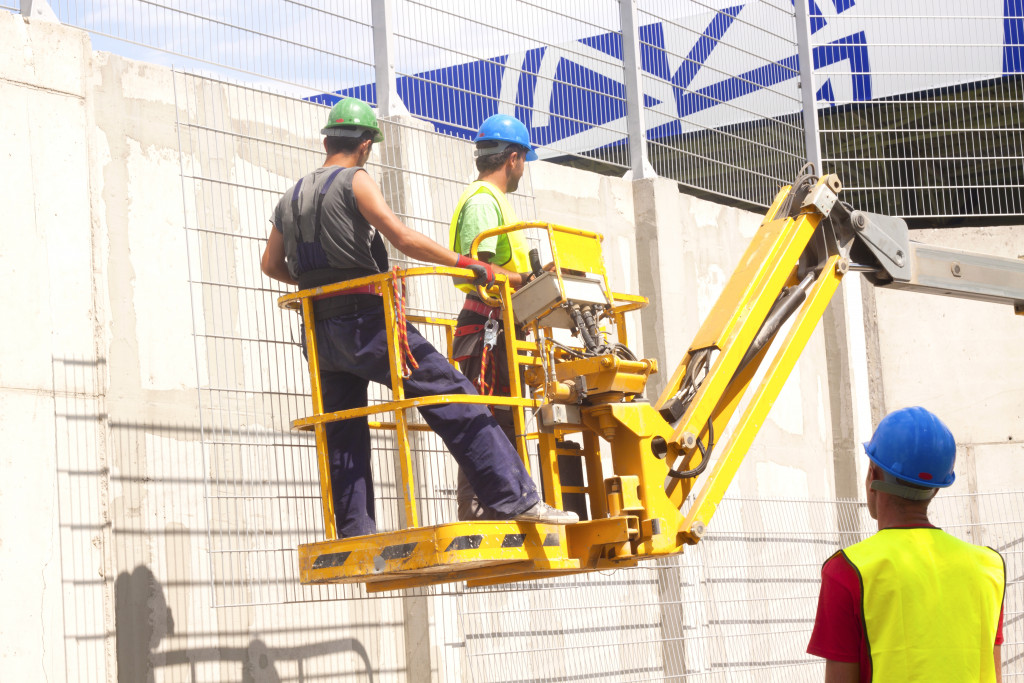- Construction scheduling software helps manage project timelines and reduce the risk of costly delays.
- Drones are invaluable for monitoring job sites, conducting site surveys, and improving safety.
- Virtual Reality (VR) and Augmented Reality (AR) can help contractors identify potential design flaws and adjust their plans accordingly.
- Building Information Modeling (BIM) helps contractors accurately estimate budgets and optimize their workflow.
- Machine Learning (ML) can automate complex processes such as safety inspections, helping to reduce the risk of costly delays.
The construction industry is rapidly evolving, requiring the latest tools and technology to keep up with the competition. Whether you’re an independent contractor or own a large construction business, having access to the right tools can make all the difference in your success. Here are five tech and tools that should be part of your toolkit if you want to succeed in the construction industry.
1. Construction Scheduling Software
Construction scheduling software like the helpful Biddi app can help construction companies stay organized and manage their project timelines more effectively. By accurately tracking tasks and milestones associated with each project, businesses reduce the risk of costly delays that could affect customer satisfaction. Scheduling software also helps ensure that all stakeholders are on the same page throughout the project.
2. Drones
Drones are becoming more popular in the construction industry. This technology is invaluable for monitoring job sites from above, checking ongoing projects and identifying potential problems before they become major.
Here are other ways drones help the construction industry:
Site Surveying
Drones are an efficient and cost-effective way to conduct site surveys. They allow contractors to accurately map terrain, identify potential hazards, and measure distances between objects on the job site without physically moving from one spot to another. This speeds up the surveying process, saving construction companies time and money.
Construction Monitoring
Drones can also be used to monitor construction sites in real time. This allows contractors to track the progress of each project, identify problems quickly, and adjust their plans accordingly. It also helps ensure that projects remain on track and are completed within budget and on time.
Safety

Safety is always a top priority for construction sites. Drones are a great way to protect workers from potential hazards. With their aerial view, drones can immediately identify any unsafe conditions on-site and provide contractors with the information they need to address them quickly.
Stockpile Measurement
Drones also make measuring raw or building materials stockpiles on the job site easy. By using drones to quickly and accurately measure stockpiles, contractors can save time and money by ensuring that they order only the amount of material needed for their projects.
3. Virtual Reality and Augmented Reality
Virtual Reality (VR) and Augmented Reality (AR) are becoming increasingly popular in construction. VR and AR can create immersive 3D models of construction sites, enabling contractors to walk through space virtually before any physical work begins. This allows them to identify potential design flaws, ensure their plans meet safety standards, and visualize how the project will look. It also allows them to adjust their designs in real time, helping them avoid costly mistakes and delays.
AR can also be used on-site to help workers quickly identify potential problems and hazards. For example, they could use AR glasses to instantly get information about a specific construction element without leaving the job site.
4. Building Information Modeling (BIM)
Building Information Modeling (BIM) is a powerful tool for construction companies. It allows contractors to access detailed 3D models of their projects, helping them better visualize and plan each stage. This helps eliminate costly errors and delays that could lead to financial losses or unsatisfied customers.
Furthermore, BIM provides valuable insight into the cost and resources needed for each project. This helps contractors accurately estimate budgets, optimize their workflow, and ensure all projects are completed on time and within budget.
5. Machine Learning

Machine Learning (ML) is rapidly gaining traction in the construction industry. ML can analyze data from job sites and automate complex processes such as safety inspections and risk assessments. This helps contractors save time and reduce the chances of failing a safety inspection or missing a deadline.
Moreover, ML-driven systems can help construction companies monitor job sites more effectively and identify potential problems before they arise. This helps them reduce the risk of costly delays, improve customer satisfaction, and stay ahead of the competition.
In Summary
These are just a few technologies and tools that can help construction businesses succeed in today’s competitive landscape. The right combination of tech and tools can make all the difference for your construction business, so ensure you have the ones you need to succeed. From optimizing project schedules to surveying sites from drones, these technologies can help your business stay competitive and successful.
